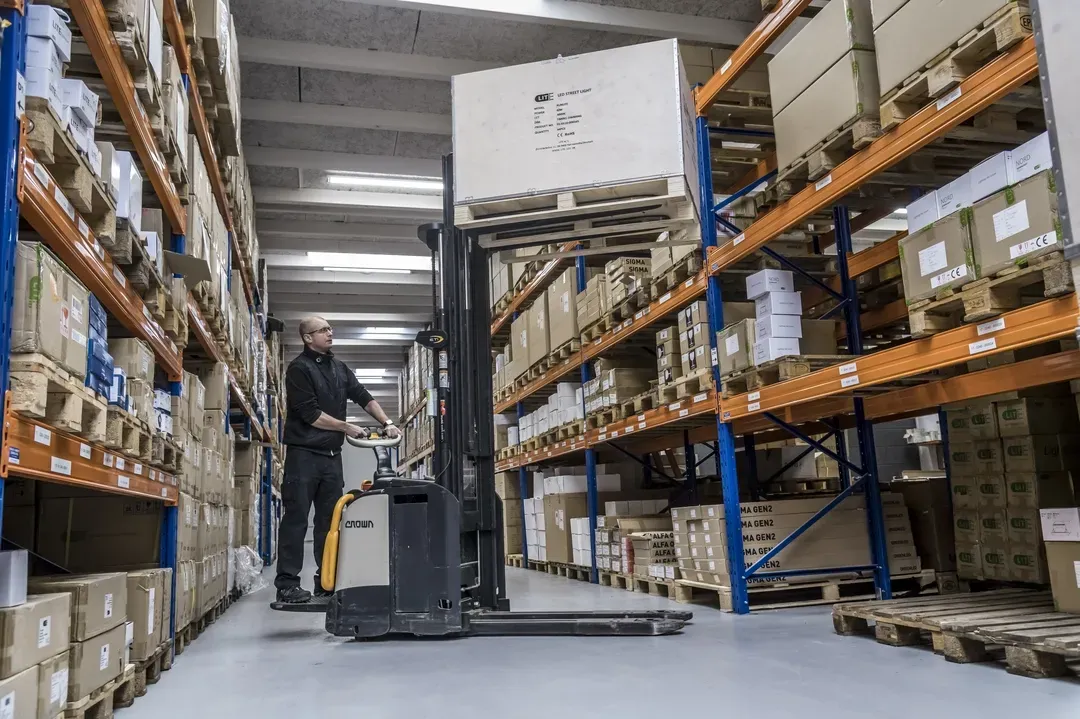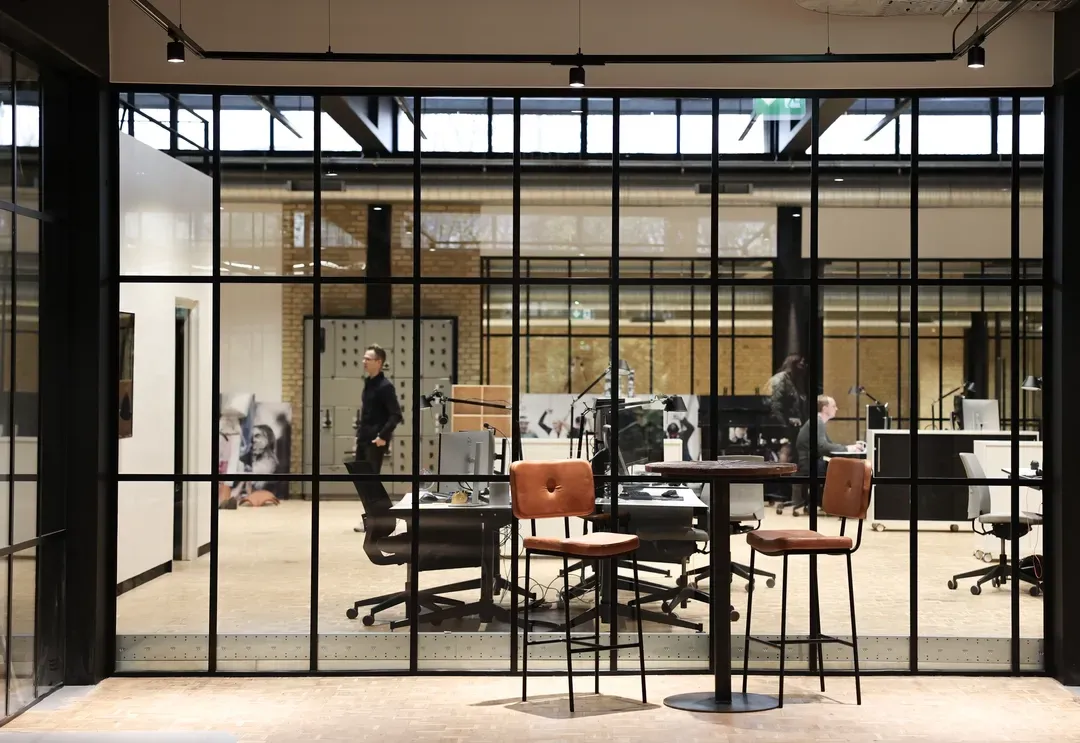GUIDE TO LIGHT
industrial and warehouse lighting

Why Choose LED Lighting for Industry and Warehouses?
LED lighting has become a preferred solution in the industrial sector, and for good reason. Compared to traditional light sources such as fluorescent and halogen lamps, LED solutions offer a wide range of advantages:
1. Energy efficiency:
LED luminaires use up to 80% less energy than traditional light sources, significantly reducing energy costs.
2. Long lifespan:
LED lights have a longer lifespan, which means fewer replacements and lower maintenance costs.
3. Better light quality:
LED lighting offers high color rendering (CRI) and bright, uniform light that improves visibility in large spaces.
4. Flexibility:
LED solutions can be adapted to different needs, such as dimming, IP certification (for dust and water protection) and explosion protection.
5. Sustainability:
LED lighting is environmentally friendly and free of harmful substances such as mercury.
Types of Lighting for Industry and Warehouse
There are several types of LED lighting that can meet different needs in the industry:
1. High Bay Lights
High bay lights are ideal for halls and warehouses with high ceilings. They offer powerful, focused light that illuminates large areas effectively.
2. Tubes and Fixtures
LED tubes are an energy-efficient replacement for traditional fluorescent tubes and are well suited for storage shelves and work areas.
3. Explosion-proof lighting
For demanding environments such as chemical plants or the oil and gas industry, explosion-proof lighting is a necessity to ensure safety and reliability.
4. Dimmable lighting
Dimmable LED solutions provide the flexibility to adjust brightness based on activities and needs, saving energy and increasing comfort.
How to Choose the Right Lighting
Choosing the right lighting requires a thorough assessment of the facilities and their needs. Here are some key factors to consider:
1. Lumen and Brightness
Make sure the lighting delivers enough brightness (lumens) to illuminate the entire room, especially in areas where detailed work is being done.
2. Color temperature
Color temperature is measured in Kelvin (K) and affects the working environment:
- Cold light (5000 K or higher): Ideal for production areas and warehouses.
- Neutral light (3500-4500 K): Suitable for office or mixed environments.
3. IP Certification
If the lighting is to be installed in dusty, humid or wet areas, choose IP65 or higher certified products.
4. Energy Class and Efficiency
Choose LED products with high energy efficiency ratings to maximize savings.
5. Lifespan and Maintenance
Ensure that the lighting has a long lifespan and requires minimal maintenance.
LIGHT FOR INDUSTRY
LED lighting is not just a practical solution – it is an investment in efficiency, safety and sustainability. Whether you work in a warehouse, a production facility or a chemical plant, modern LED solutions can help you achieve your goals.
Contact us today to find the right lighting solution for your business. We offer tailor-made solutions that meet your specific needs and ensure maximum value for your investment.
Advantages of Modern LED Solutions in Industry
LED lighting can make a significant difference to both operations and safety in industrial environments:
- Reduced operating costs:
Lower energy consumption and maintenance saves money in both the short and long term. - Improved working environment:
Proper lighting increases employee comfort and productivity. - Increased safety:
Better visibility reduces the risk of work accidents. -
Sustainability goals:
LED lighting helps companies reduce their carbon footprint and achieve environmental certifications.
Implementation of LED Lighting
To ensure a successful implementation of LED lighting in your industrial or warehouse facility, the following steps are recommended:
- Lighting Needs Analysis:
Map the facilities and identify areas with special needs, such as workstations, walkways, and outdoor areas. - Product Selection:
Choose lighting products that meet the requirements for brightness, color temperature and robustness. - Installation:
Work with a professional installer to ensure proper setup and placement of the lights. - Monitoring and Maintenance:
Use intelligent control systems to monitor lighting and minimize waste.
ALSO READ SOME OF OUR OTHER GUIDES





